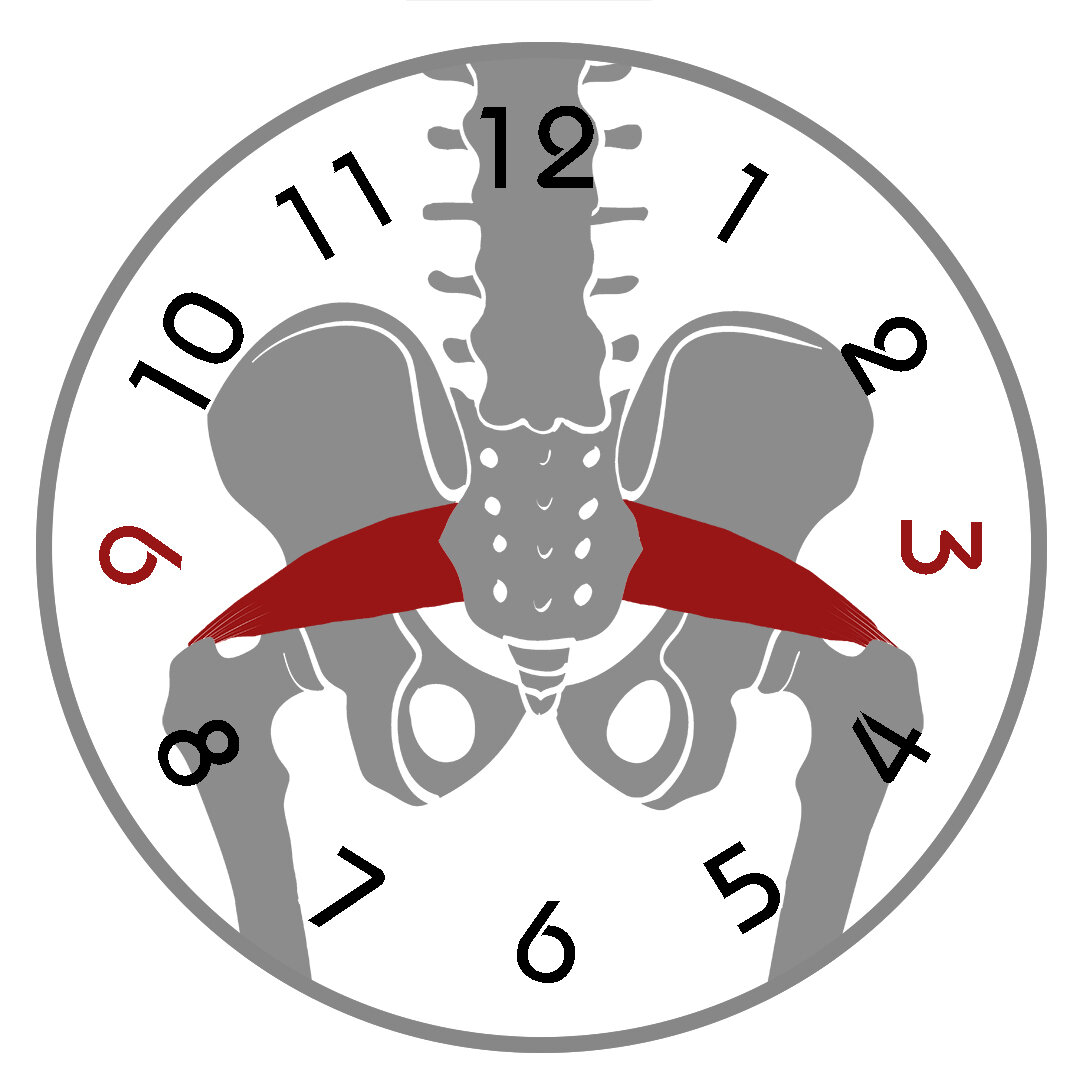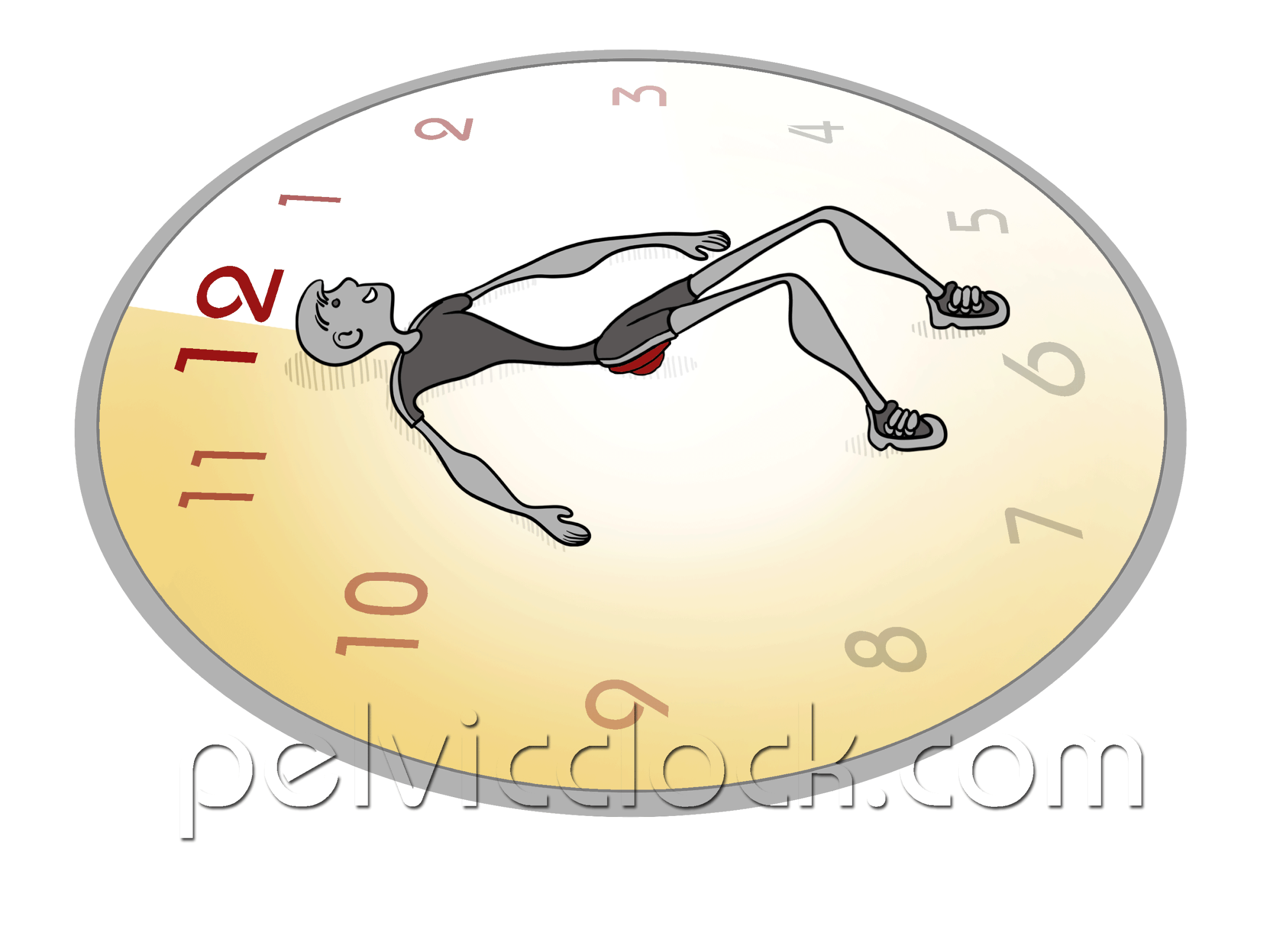How Hip Alignment Exercises Help Piriformis Syndrome
Igor Gershengorin
By Yana Blinova, MS, Inventor of Pelvic Clock® Exercise Device, Former Olympic Coach
There are two piriformis muscles in the human body: one on the right side, one on the left. Each piriformis muscle extends from the front of the sacrum to the hip - the greater trochanter of the femur, to be more precise.
A disorder of this muscle is called piriformis syndrome. The main symptom is pain radiating from the hip and buttock down into the leg.
Physical examinations of patients with piriformis syndrome often reveal a difference in length and tone of the piriformis muscles. It is more common to see hypertrophy than atrophy of the piriformis muscle on the affected side.
Piriformis syndrome is difficult to diagnose, as it often resembles other conditions. Needless to say, proper diagnosis is a key to successful treatment.
There are two types of piriformis syndrome: primary and secondary.
Primary piriformis syndrome is caused by a congenital anatomic abnormality that leads to the sciatic nerve piercing the piriformis muscle. Your physician will need to rule this out before you can receive treatment. About 15 percent of piriformis syndrome patients are anatomically predisposed to a compressed sciatic nerve by the piriformis.
Secondary piriformis syndrome is a result of other underlying causes, such as the following.
Causes of Piriformis Syndrome
Injury
Swelling or scarring from an injury to the buttocks may cause the sciatic nerve to become compressed.
Prolonged sitting
A desk job, prolonged driving, or cycling can cause compression of the sciatic nerve, leading to so-called “wallet syndrome.”
Sacroiliac Dysfunction
Due to the close proximity of the sacroiliac (SI) joint to piriformis muscle, SI joint dysfunction may result in a spasm of the piriformis.
Asymmetrical Over-Pronation of the Foot
One foot pronating more than the other during long-distance walking, running, or cycling can lead to repetitive internal rotation of the femur and overuse of piriformis muscle.
Scoliosis
A lateral curve in the lumbar spine often leads to leg length discrepancy, a rotated pelvis, uneven hips, and, eventually, piriformis syndrome as a result of asymmetrical overuse of one side of the body.
Sacral Torsion
Repetitive rotation of the sacrum during walking leads to excessive rotation of the pelvis and, as a result, may cause spasms in the piriformis muscle.
Asymmetrical Over-Pronation of the Foot
Leg Length Discrepancy
One leg may be longer than the other due to a lateral pelvic tilt. The resulting repetitive asymmetrical movement leads to the overuse of one of the two piriformis muscles.
Uneven Hips
The iliac crest of one hip can be higher than the other as a result of a lateral pelvic tilt. Once again, repetitive asymmetrical movement (such as walking) leads to overuse and sometimes spasms of the piriformis muscle.
Treatment of Piriformis Syndrome
Treatment of piriformis syndrome includes: physical therapy, osteopathic manual therapy, chiropractic adjustments, acupuncture, ice, and anti-inflammatory medication.
Once the physical therapy or other treatment is complete, there is no guarantee the piriformis muscle will stay out of trouble permanently. Piriformis syndrome is a chronic condition and patients are at a high risk of relapse. For this reason, regular piriformis-specific exercises should be mandatory.
Surgical intervention is usually only a last resort, as more than 79 percent of patients with piriformis syndrome report seeing symptom reduction through physical therapy and the use of anti-inflammatory medication.
What Should Piriformis Syndrome-Specific Home Exercise Programs Include?
Hip alignment exercises to address muscle imbalance caused by asymmetrical overuse
Stretching of the piriformis and surrounding muscles
Strengthening of the hip adductor and adductor muscles
HOW TO realign Your Hips at Home
Although most people are unaware that they are suffering from an uneven size and muscle tone of the piriformis, it is possible to improve proprioception through somatic, body, and mind exercises. In particular, Pelvic Clock® precision exercises can help.
Both piriformis muscles are attached to the sacrum. The sacrum is a great point of reference, as it is located right on the midline of the pelvis. The Pelvic Clock® device helps establish the connection between your sacrum bone and your brain. The recess on the device is specially designed to cradle the sacrum. Once you have positioned the sacrum properly, your brain is able to recognize the asymmetry in your pelvis. Of course, it takes some practice to master precision exercises for hip alignment, but it’s hard to make mistakes. Exercises with the Pelvic Clock® are subtle, safe, and intuitive.
Bear in mind, these exercises are definitely not for everyone. Mindfulness and the ability to stay focused are two skills not everyone possesses. If you are seeking an instant miracle cure, look elsewhere. Otherwise keep reading. With just a little work, you can learn how to sync your brain, hips, and pelvis.
“3-9” with Bent Legs
The “3-9” exercise helps correct pelvic rotation and improves the neutral position of the sacrum.
Without moving your knees, tilt your pelvis to the left toward the 3 o’clock marker.
EXHALE and HOLD this position for 3 to 5 seconds. Then, INHALE and tilt your pelvis over to the right side toward the 9 o'clock marker. EXHALE and HOLD this position for 3 to 5 seconds. Repeat 10 times.
You should notice a difference between your right and left sides. Repeat the stretch on the side of your body that has a more limited range of motion 5 more times.
Without moving your knees, tilt your pelvis to the left toward the 3 o’clock marker.
EXHALE and HOLD this position for 3 to 5 seconds. Then, INHALE and tilt your pelvis over to the right side toward the 9 o'clock marker. EXHALE and HOLD this position for 3 to 5 seconds. Repeat 10 times.
You should notice a difference between your right and left sides. Repeat the stretch on the side of your body that has a more limited range of motion 5 more times.
“12-3-6-9” and “12-9-6-3”
Imagine the axis of rotation extends from your navel through the center of the device. SLOWLY move your pelvis and hips in a circular direction around that center of rotation. Close your eyes and try to locate the tightest spot in your pelvis on the imaginary clock dial. Then, try to improve the range of motion in the tight area. Repeat 10 times.
Clockwise rotation follows a 12-3-6-9 pattern. Counterclockwise rotation follows the 12-9-6-3 pattern.
Piriformis and Ankle Stretch for Over-Pronation
Over-pronation during walking, running, or cycling can cause a variety of problems including plantar fasciitis, hip or knee bursitis, and piriformis syndrome. However, the connection between the hips, knees, and feet is not obvious to fitness beginners.
Please pay attention to details, as this stretch is harder than it looks.
Place the flat surface of Pelvic Clock® exercise device on the floor. Stand with outer sides of your feet on the floor and inner sides of the feet on the round surface of the device. This is the supination of your feet—the exact opposite to pronation.
Lean forward and, keeping your knees wide apart, squat like downhill skier. Clasp your hands behind your back and pull your shoulders back. HOLD this stretch for the duration of five deep breaths. Then, return to the starting position. Repeat 3-5 times.
Side Stretch
Side stretch helps to correct a lateral pelvic tilt by targeting the quadratus lumborum (QL) muscles.
Left Side Stretch
With your arms above your head, take your left wrist in your right hand. Pull your left arm to the right to stretch your left side. As you do this, tilt your pelvis to the left. HOLD this stretch for the duration of five deep breaths.
Right Side Stretch
With your arms above your head, take your right wrist in your left hand. Pull your right arm to the left to stretch your right side. As you do this, tilt your pelvis to the left. HOLD this stretch for the duration of five deep breaths.







